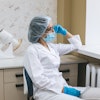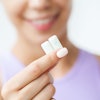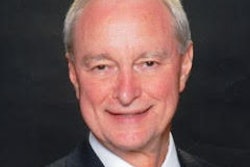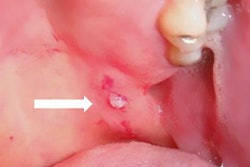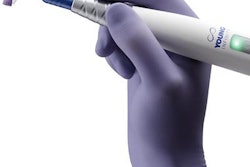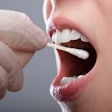
Editor's note: This is the second article in a continuing series where we will be asking dental hygienists from across the country, at different stages of their careers, what they believe the future of dental hygiene holds.
 Paula Quinn, RDH.
Paula Quinn, RDH.Paula Quinn, RDH, has spent the last three decades in the dental industry, starting as a dental assistant, moving on to become a hygienist, and now as an owner of a dental practice.
In her spare time, she consults, speaks, and educates on all things dental, specifically how to integrate technology into the hygiene practice.
Quinn was kind enough to speak to us about her experience with technology as a registered dental hygienist, and the role technology will continue to play for dental hygienists in the future.
Q: What attracted you to becoming a registered dental dygienist?
A: I was first exposed to dentistry while volunteering for the Red Cross. They placed me with dentists, and I loved being asked to help with patients. That experience led me to apply for a dental assistant position at a local practice. After about seven years, I still loved working with patients and decided I wanted to go one step further to assist them. That's when I decided to go to hygiene school and become a registered dental hygienist.
Q: How long have you been an RDH? Can you tell me more about your experience and career in general?
A: I have been a registered dental hygienist for 23 years. I have been lucky enough to experience many different positions during my 30-year career. I co-owned a dental practice for about eight years. For the past six years, I have been active in dental consulting, speaking, and educating. Recently, I purchased my own dental practice in Phoenix. My favorite part about my career in the dental industry is where it can take you. I love that knowledge it has given me to go down so many different paths, to the point where I am now able to have my own practice.
Q: What has been your experience with technology as a hygienist?
A: Technology has changed dramatically throughout my career. When I started, I was dipping x-rays and we had paper schedules. I joke that during those days, x-rays and schedules always were getting misplaced. When they did turn up, they'd be covered in coffee or something else. It was not the most efficient way to work. Now, we have digital x-rays, practice management software, and more.
The best part of technology is that it allows us to prevent dental problems instead of fixing them later. We can use digital scanners to do bite maps and see how teeth change over time. With these digital scanners, we can see changes like receding gumlines in a period of months rather than years. We can now help patients make decisions before the issue occurs, by using the technology to both identify and treat the problem. Diode tissue lasers are one example of technology that can be used in this preventive approach. They are used to decontaminate and reduce bacteria and cross-contamination in the mouth. Prevention is always better for the patient, and technology is allowing us to do more and more.
Q: What are some of the biggest changes in technology for the RDH profession that you have seen throughout your career?
A: Besides the products mentioned above, I would say that one of the biggest changes surrounding technology is that patients have become their own advocates. Back in the day, there were local dentists who everyone went to, no matter their experiences. Now we have so much more knowledge about technology, and patients have become more aware. They drive change in every industry, and they want more advanced technology. These patients have made the dental community step up their games in how they approach everything, like financing, patient communications, convenience, procedures, and more. Patients have learned to ask for dental care that fits with their lifestyles and that includes advanced dental technology.
Q: What are some of the most exciting technological innovations in your opinion?
A: The most exciting technological innovation has been the digital scanner. It can show changes over time, time lapses, and reverse time lapses, which can show how dental treatments have improved patients' teeth. It teaches you more about teeth, their structures, and bite pressure and stress on certain teeth. It allows you to predict so much more about the patient's oral health.
Diode lasers aren't exactly new. I've been using them for 19 years, but I think people are becoming more aware of their capabilities. Now, there is a hygiene-specific dental laser. The Epic Hygiene is a diode laser created by hygienists for hygienists. Lasers allow you to decontaminate the teeth and pockets, which allow you to worry less about them having severe issues in the future.
Q: What are the biggest trends in dental hygiene technology?
A: There has been an increase in mobile applications and other venues for teledental hygiene. Evolving technologies allow patients to be treated from home more frequently. You can provide pictures and communicate with patients virtually. It is more convenient for patients and alleviates additional costs and time for the dental office. Being able to communicate with patients without them having to go into the practice is a huge trend, and I think it will continue to expand.
Q: Are there any challenges related to technology for dental hygienists?
A: One challenge is education. With technology evolving so rapidly, it can be difficult for hygiene schools to stay current. For many young hygienists, it is a challenge to realize that the industry is different compared to what they learn in school. Everything starts with the curriculum. I personally think that hygiene schools should focus more on the changes in the industry and the diverse world of aging patients. With all the technological changes, curriculum should be more focused on patient-centered care and understanding what patients want and why, as well as hygiene care outside of traditional settings. Hygiene schools should find ways for the curriculum to be applicable to the current needs of the patient population.
Q: How do you see technology for dental hygienists evolving?
A: I think technology will become more mobile. For instance, many scanners, lasers, and other technology now have battery backups and are easy to move from patient to patient, or even take remotely outside of the dental practice. I see this trend continuing, and more devices becoming mobile or handheld.
Also, advanced dental technology is going to become more common. When I go to speak or teach, I always emphasize that it isn't if this technology becomes more commonplace, but when. Whether it is diode lasers, digital scanners, or other services, the demand for advanced technology is going to increase. If you aren't using advanced tools, you will get left behind as the industry advances.
We used to be paid to clean teeth, but that is no longer the case. It is not cleaning teeth that makes us valuable, but our education and knowledge that helps patients feel comfortable and able to make decisions about their oral health. We will be forced to understand advanced technology and how to use it. Knowing this is coming, you must evolve to become a technologically advanced hygienist. Those who don't likely won't have a very long stay in the field.
The comments and observations expressed herein do not necessarily reflect the opinions of DrBicuspid.com, nor should they be construed as an endorsement or admonishment of any particular idea, vendor, or organization.
